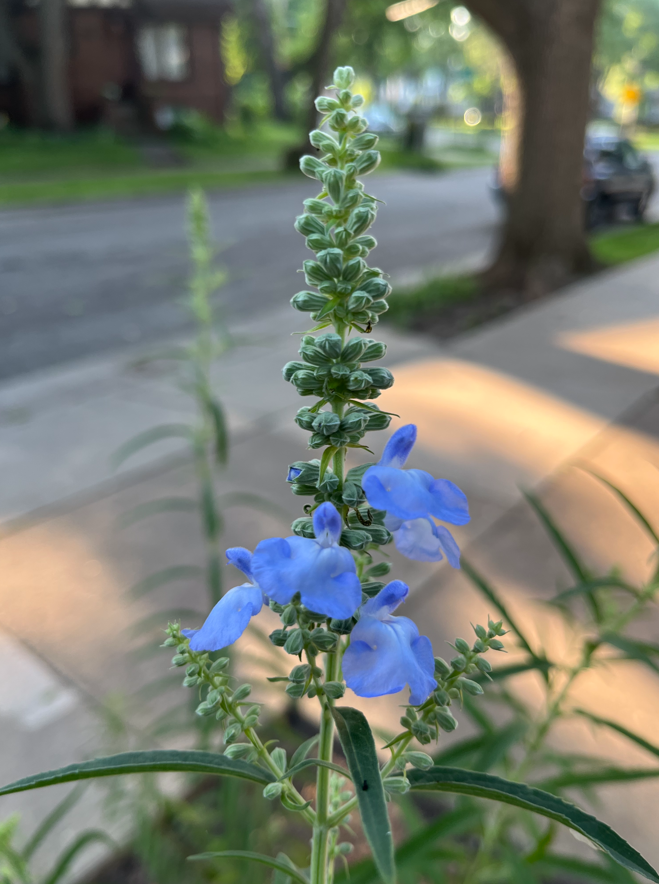Plant of the week: Blue Sage
posted
Written By: Engineering Conservation Crews
Blue sage is a member of the Mint family (Lamiaceae) making its leaves aromatic. “Salvia” is a name that means “healer,” referring to this ancient name for a sage with medicinal properties. The name “sage” refers to this plant being traditionally used as medicine for pain.
Blue sage is a member of the Mint family (Lamiaceae) making its leaves aromatic. “Salvia” is a name that means “healer,” referring to this ancient name for a sage with medicinal properties. The name “sage” refers to this plant being traditionally used as medicine for pain.
Blue flowers bloom for long periods toward the end of summer and into autumn when yellow and white often dominate the landscape. Growing up to 5 feet tall, this stoic species will stand out even when observing an area with one individual plant. The upper lip of the flower is hooded and shorter than the lower lip, which serves as a landing pad for pollinators. Two stamens occur at the end of a stalk that acts as a lever, so when insects land on the flower their backs become dipped in pollen. Not only is this species important to bees and butterflies, it acts as one of the host plants to the hermit sphinx moth.
Salvia azurea is a hardy species that prefers its soil dry, making it easy to grow for beginners. It prefers poor soils and will tend to flop over in richer areas. If you are not growing it alongside grasses or other sturdy neighboring plants to lean on, you may want to stake it or pinch it early in the season to inhibit its height. Furthermore, if you struggle with your plants being eaten, the aromatic properties keep it protected from most herbivores. Hungry deer and rabbits tend to avoid this species entirely!
This photo was taken by the Engineering Division's very own Bryan Cooper, who grew this fine specimen in his yard!
Each week during the growing season, the Engineering Division focuses in on a Plant of the Week to raise awareness of different plants in the field that benefit our environment. The Engineering crews in the field tasked with conservation share expert insight on these plants and their benefits each week in a creative way!

This content is free for use with credit to the City of Madison - Engineering and a link back to the original post.
